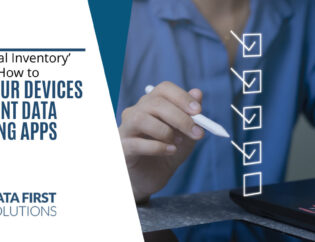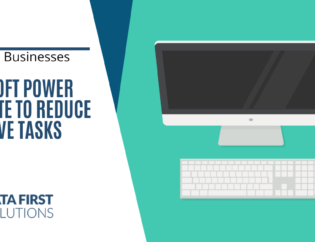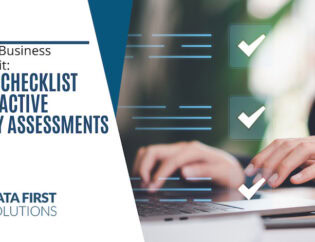
A study by Insurance Canada shows that poor data quality is a primary reason why 40% of business initiatives fail to achieve their targeted benefits. That means nearly half of your best ideas and efforts could fall flat, not because of a lack of talent or drive, but because of messy, unreliable data.
IT solutions are essential — without properly prioritizing your data, you’re missing out on valuable opportunities and leaving profits untapped. Poor data practices lead to many missed opportunities, wasted time, and risky investments. But when managed right, your business’s data becomes one of its most valuable tools.
Let’s look into how small businesses can manage and control their data effectively, without needing a huge IT department or a certification.
Why Small Businesses Can’t Ignore Data
Think of data as the engine of your business. Every sale, customer interaction, and marketing campaign produces information that, if used right, can fuel growth.
Here’s how small businesses are already using their data to succeed:
- Smarter decisions – When your data is well-managed, you start making choices based on facts, not hunches. You can spot patterns, understand what’s working, and act quickly when things change.
- Better inventory planning – Data helps you stay ahead. You know what customers want, when they want it, and how much to stock—so you’re not left with wasted space or missed sales.
- Cost savings – With clean, organized data, it’s easier to find ways to save. Whether it’s time, money, or resources, you can cut back on waste and run your business more efficiently.
This isn’t magic—it’s the practical use of existing data. However, for these strategies to be effective, your data must be accurate, secure, and easily accessible when needed.
What Is Data Governance?
Let’s demystify it. Data governance just means treating your business’s information like the asset it is. Just as you wouldn’t let physical paperwork pile up in a messy office, your digital data needs structure, rules, and security.
Good data governance answers questions like:
- Who can access specific data?
- How long should we keep certain records?
- Is our data safe from accidental loss or a security breach?
- Are we following privacy regulations?
You don’t need a full-fledged tech department to start. All you need is proper structure and the right IT solutions for your small business to protect and manage data effectively.
Key Goals of Data Governance
Let’s simplify things. Data governance for small businesses revolves around three main goals:
Control and Ownership
You decide who gets to see or change what. With role-based access, team members only access the data they need, reducing risks.
Security and Compliance
Data Breaches are a serious problem. Thus, strong data governance provides encryption, access controls, and regular audits to ensure sensitive information is secure and privacy laws are followed.
Quality and Accuracy
Poor data quality results in poor decisions. Standardizing data entry and storage ensures the information you depend on is accurate and trustworthy.
Getting Started: A Simple Framework
Feeling overwhelmed? Don’t be. Here’s a step-by-step approach that keeps things practical and doable:
Audit Your Data
List out what types of data you collect—emails, customer names, sales numbers, etc.—and where it’s stored (email, cloud apps, spreadsheets). This gives you a full picture.
Identify Key Data
Not all data is equally important. Pinpoint which records are critical to your operations or legally necessary to keep.
Set Roles and Permissions
Assign “owners” to each data type and decide who should have access to what. If someone leaves the company, be sure access is revoked promptly.
Protect and Validate
Use password protection, firewalls, or even encrypted cloud storage. Also, ensure data is entered in a consistent format—errors cost time and money.
Use Cloud-Based Tools
Cloud-based solutions are budget-friendly and scalable. They also come with built-in compliance and security features. IT services specializing in cloud data management can guide you in choosing the best solutions for your needs.
Train Your Team
Everyone on your team plays a role. Train staff on simple best practices: don’t share passwords, double-check data entry, and report anything suspicious.
Don’t Forget About Data Retention
It’s not enough to collect and store data—you need a plan for how long to keep it.
Start by asking:
- What data are we legally required to keep?
- What info is helpful for business decisions?
- What can we safely delete?
Then create retention rules. For example:
- Keep sales records for 7 years.
- Archive client emails after 12 months.
- Delete outdated contact info after 2 years.
Some email platforms offer archiving and tagging options to help automate this process. When employees leave, make sure their mailboxes are locked and properly archived, not forgotten.
How to Know It’s Working
Want to be sure your data governance is making a difference? Watch for these key indicators:
- Fewer errors in your records (like customer addresses or payment issues).
- Fewer data-related headaches, such as lost files or compliance scares.
- Better business results, like higher customer satisfaction, smarter marketing, or faster decision-making.
- Increased team confidence in using and managing data effectively.
If you start to see improvements in how smoothly things run—or fewer “where is that file?” moments—you’re on the right track.
It’s Not About Size, It’s About Smart Strategy
Small businesses often assume IT solutions and data governance are for the big players. The truth? Being small can be an advantage. You’re more agile, more flexible, and can put smart systems in place faster than a large corporation weighed down by red tape.
That’s where Data First Solutions comes in. With years of experience supporting growing businesses, they offer tailored IT services that simplify data governance without overwhelming your team. From data audits to cloud security, their solutions are built to grow with you.
Take control of your data today—reach out to Data First Solutions and turn your information into a competitive edge.






